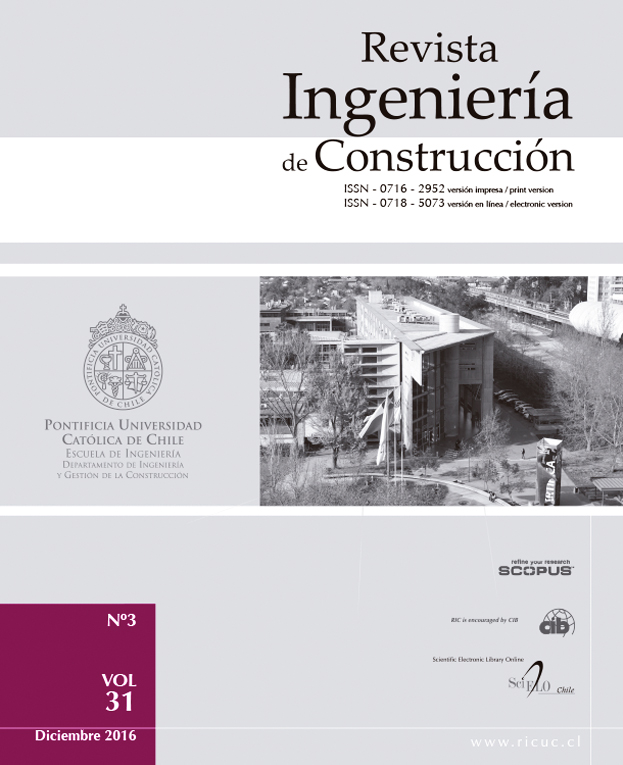Mechanical behavior of concrete cold joints
DOI:
https://doi.org/10.4067/S0718-50732016000300001Keywords:
cold joint, constitutive model, stress, strain, finite elementAbstract
A smooth cold joint of concrete is an untreated weak plane caused by an interruption of the casting process, which can significantly affect the performance of a structural system. In this paper, the problem of the generation of cold joints is approached from two complementary perspectives. a) The loss of resistance due to the occurrence of cold joints is quantified through an extensive experimental program of concrete cylinders and b) a constitutive model is proposed and its performance is analyzed to simulate the time-dependent behavior of concrete under load (viscosity) and no load (setting). A loss of resistance over 30% for cold concrete cylinders with diagonal joints was found, while concrete cylinders with horizontal cold joints had no loss of resistance. Thus, the loss of resistance depends on the orientation of the cold joint with respect to the direction of the main stresses. This aspect is explained by the proposed constitutive model of viscous–reactive type, which is able to simulate the results of the experimental program. This work opens the possibility of numerical modeling of boundary value problems of structureswith a cold joint and to study their influence on the structure’s overall stability.


